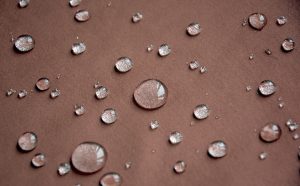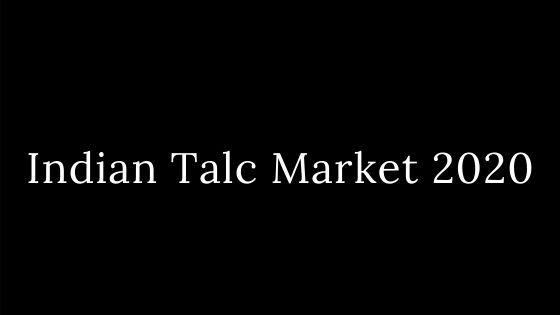Talc comprises as one of the key minerals in the category of industrial minerals traded from the country. India stands as one key resource for various grades of talc for domestic consumption as well as exports. India has one of the best and purest of talc deposits in the world.
The state of Rajasthan in the northwestern part of India is the epicentre of traditional talc trade since the beginning of the century. The key talc mining areas lie in and around the districts of Udaipur, Jaipur, Dausa and Bhilwara where the talc industry lies.
There are more than 400 small and medium industries which work around talc and associated minerals in mining and processing of minerals.
The state of Rajasthan has various grades of talc composing of Pure Talc, Talc Chlorites to Talc carbonates. The major deposits still comprise of Talc Carbonate. Based on the nature of talc the talc is been processed and ground in various mills like pulverizes, roller mills, jet mills into various fineness of powders for use in industries like ceramics, paper, paints and coatings, plastics, rubber, cosmetics, pharmaceuticals and many more.
The talc industry is divided into three major categories:
- Mine owners
- Processors/Manufacturers
- Traders/Exporters
The division is based on the specialization and complexity of trade as all activities are treated as a separate entity. This division has given away to the development of many industries, traders and associations and hence the nature of business is not monopolistic.
Talc users:
Initially, the paper industry was the key consumer of the talc powder with bulk consumptions. Gradually, with the development of other minerals, the use of talc in paper reduced but it still remains as one of the bulk consumers of talc. Even the smallest of paper mills consume talc not less than 100- 150 MT a month.
Today, paints and coatings industries are the key consumer of talc with the plastic industry as the growth inhibitors. Other major industries are ceramics, rubber, foundry, refractory, soaps, cosmetics, food and pharma.
Mining developments:
Talc was once a sought commodity from Rajasthan but the recent developments in mining have led to finding more potent and high-quality white talc resources from the state of Uttrakhand. Last 15 years have seen an uprise in the talc mining from the northern Indian state of Uttrakhand. The quality is incomparable to any commercial white talc resource from Rajasthan or from around the world and Uttarakhand becomes one key player especially for white and pure talc from India.
As for talc mining, Uttarakhand becomes new Rajasthan with high-quality pure talc lumps. The deposits here are huge, pure and sought for high-end applications in plastics, cosmetics, pharmaceuticals.
Although everything looks good, the tough weather situations in Uttarakhand does not lead to a fuller development of the talc industry. There are many small and medium-sized players who buy talc lumps and grind them there. However, the weather and geographic conditions for a fuller development of the talc industry do not support.
Therefore the talc mined in Uttarakhand is traded in various parts of India and also much of high-quality talc is been exported worldwide.
States of Andhra Pradesh, Karnataka in the southern part of India also have talc resources though not in the purest form. The natural talc is a mixture of carbonates.
The availability of talc deposit is a boon to the local industries consumes the talc coming from Rajasthan.
Moreover, there has been news of finding new talc resources in the states of Jharkhand, M.P, Assam, Maharashtra, Orissa but these are into the development phase and there is no news concerning the commercialization of these resources.
Also, neighbouring countries like Nepal and Bhutan have a subsequent quality of talc resources but mining in these countries have been banned due to environmental factors.
Future of Talc:
The demand for talc has been rising and so is the production. Therefore there is no lack of demand or supply. However, geographically the talc markets are more distributed now with the development of the talc industry around the mining resources. Rajasthan is still the key producer and distributor of talc because of the inflow of white talc raw materials coming from Haldwani Uttrakhand.
Government policies towards mining also play a major role. In recent times there has been no major development in granting new leases or reviving old mining leases or closed mines.
But recent developments in plastics, especially automobile plastics and demand for ultrafine powders, have given away to new developments and newer markets and there will be newer requirements for technical products.
Exports:
India remains one of the stable economies for the supply of conflict-free talc lumps for export worldwide. The best quality talc lumps from Uttarakhand are a pricey possession and exported worldwide. Japan remains as a key buyer for the top quality of talc raw material importer from India besides exports to other parts of the world.
From Asian continent, Pakistan and Afghanistan are key exporters of white talc lumps besides China but the materials coming from Afghan and Pak does not 100% qualify as conflict-free and some confusion of illicit trade always remains. So, this gives much hope to the buyers for Indian talc which is conflict-free and is mined and exported legally from the country.
SKKU MINERALS:
SKKU MINERALS, leading Talc Powder manufacturers, stands as an independent prominent player in the production and distribution of quality/technical talc and associated minerals. Over time, SKKU MINERALS has developed a partnership with various mine owners from Rajasthan and other states for supply of quality talc products. We have dedicated plants for the manufacturing of technical talc products for applications ranging in food, cosmetics, pharma and plastics. Also, ultra-fine products have been developed as Tio2 Spacer for reducing the use of Tio2 in various end-use formulations.
For more information get in touch with us info@skkuminerals.com
IMP: Statistical data’s pertaining to talc have purposefully not been used as they are misleading and incomplete.





